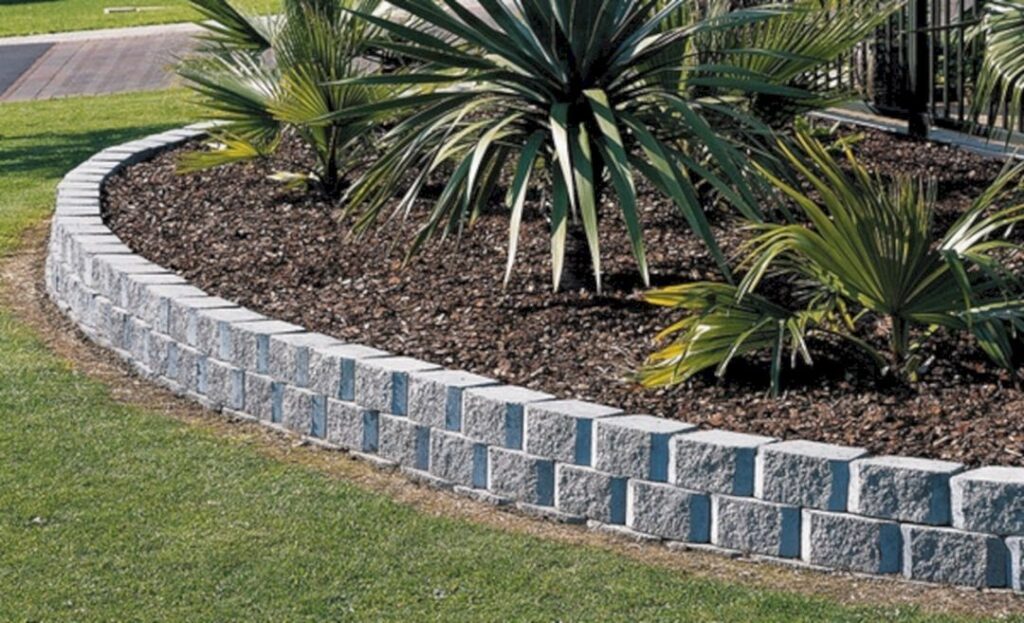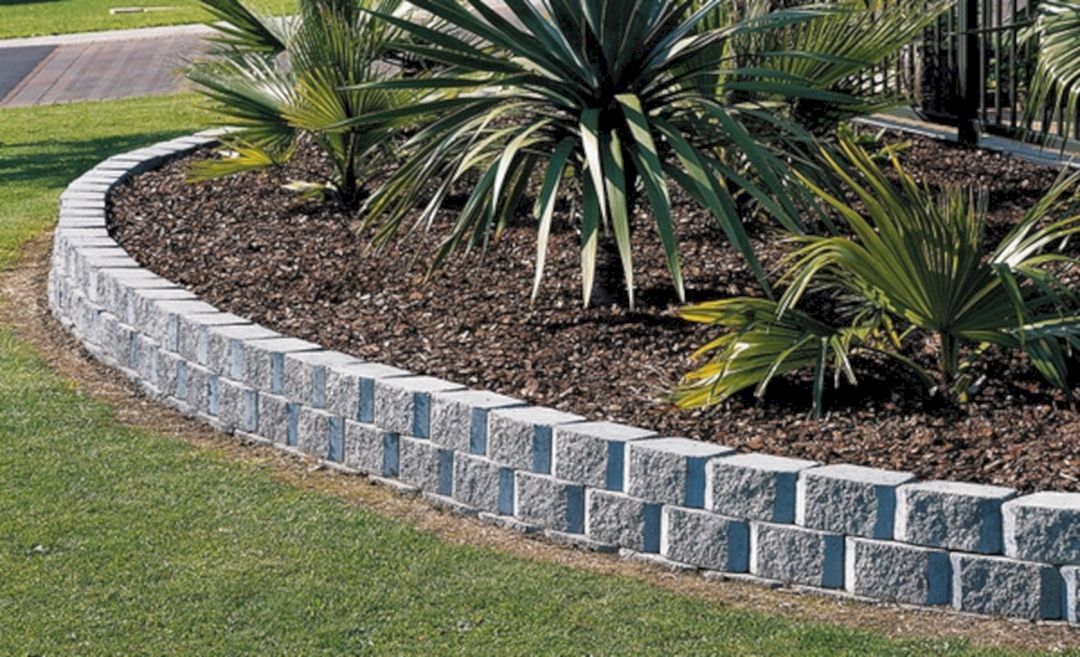
Elevate Your Landscape with Edging Stones: A Comprehensive Guide
Landscape edging stones offer a timeless and practical solution for defining boundaries, enhancing curb appeal, and preventing unwanted grass or soil migration in your outdoor spaces. Whether you’re a seasoned gardener or a weekend DIY enthusiast, understanding the versatility and benefits of landscape edging stones can transform your yard into a well-manicured oasis. This comprehensive guide explores the various types of landscape edging stones available, their installation techniques, and design ideas to inspire your next landscaping project.
Why Choose Landscape Edging Stones?
Landscape edging stones provide numerous advantages over other edging materials like plastic, wood, or metal. Here’s why they’re a popular choice:
- Durability: Natural stone is incredibly durable and can withstand harsh weather conditions, foot traffic, and the test of time. Unlike plastic or wood, landscape edging stones won’t rot, warp, or fade easily.
- Aesthetics: Stone adds a touch of elegance and sophistication to any landscape. The natural variations in color, texture, and shape create a visually appealing border that complements various architectural styles.
- Low Maintenance: Once installed, landscape edging stones require minimal upkeep. A simple rinse with a garden hose is usually sufficient to keep them looking their best.
- Versatility: Landscape edging stones can be used to create straight lines, curves, and intricate designs, allowing for endless customization possibilities. They’re suitable for flower beds, walkways, patios, and driveways.
- Erosion Control: Landscape edging stones help prevent soil erosion by creating a physical barrier that holds the soil in place, especially on sloped areas.
- Weed Control: When properly installed, landscape edging stones can help suppress weed growth by preventing weeds from spreading into your garden beds.
Types of Landscape Edging Stones
The market offers a wide array of landscape edging stones, each with its unique characteristics and aesthetic appeal. Here are some of the most common types:
Natural Stone
Natural stone landscape edging stones are quarried from the earth and come in various forms, including:
- Flagstone: Flat, irregularly shaped stones that create a rustic and natural look.
- Cobblestone: Rounded stones that evoke a charming, old-world feel.
- River Rock: Smooth, polished stones that add a touch of tranquility to the landscape.
- Granite: Durable and elegant stones that offer a sophisticated appearance.
- Limestone: Versatile stones that blend well with various landscaping styles.
Manufactured Stone
Manufactured stone landscape edging stones are made from concrete or other composite materials and are designed to mimic the look of natural stone. They offer several advantages, including:
- Consistency: Manufactured stones have a consistent size, shape, and color, making them easier to install and create a uniform look.
- Cost-Effectiveness: Manufactured stones are often more affordable than natural stones.
- Variety: Manufactured stones are available in a wide range of colors, textures, and styles.
Brick
Brick landscape edging stones are a classic choice that complements traditional and contemporary landscapes alike. They’re durable, affordable, and easy to install.
Concrete Pavers
Concrete pavers offer a clean and modern look. They’re available in various shapes, sizes, and colors, allowing for creative design possibilities. [See also: Concrete Paver Installation Guide]
Installation Techniques for Landscape Edging Stones
Proper installation is crucial for ensuring the longevity and stability of your landscape edging stones. Here’s a step-by-step guide:
- Planning and Preparation: Determine the desired layout and mark the area where you’ll be installing the landscape edging stones. Clear away any grass, weeds, or debris.
- Excavation: Dig a trench along the marked line, ensuring it’s deep enough to accommodate the height of the stones plus a layer of base material. The trench should be slightly wider than the stones to allow for adjustments.
- Base Material: Add a layer of compacted gravel or crushed stone to the bottom of the trench. This will provide a stable base and improve drainage.
- Stone Placement: Carefully place the landscape edging stones in the trench, ensuring they’re level and aligned. Use a rubber mallet to gently tap them into place.
- Backfilling: Backfill the trench with soil or gravel, compacting it around the stones to provide additional support.
- Finishing Touches: Add a layer of mulch or decorative stone to the garden bed to complete the look.
Design Ideas for Landscape Edging Stones
Landscape edging stones can be used in a variety of creative ways to enhance your outdoor spaces. Here are some design ideas to inspire you:
- Formal Gardens: Use straight lines and symmetrical patterns to create a formal garden with a classic and elegant look.
- Cottage Gardens: Opt for natural stone and meandering curves to create a charming and informal cottage garden.
- Raised Beds: Use landscape edging stones to create raised garden beds, which are ideal for growing vegetables, herbs, or flowers.
- Walkways and Pathways: Define walkways and pathways with landscape edging stones to create a safe and visually appealing route through your yard.
- Patios and Decks: Use landscape edging stones to create a border around your patio or deck, defining the space and adding a touch of elegance.
- Water Features: Incorporate landscape edging stones into water features like ponds, fountains, or streams to create a natural and serene atmosphere.
Maintaining Your Landscape Edging Stones
While landscape edging stones are relatively low-maintenance, regular cleaning and inspection can help prolong their lifespan and maintain their aesthetic appeal. Here are some tips:
- Cleaning: Rinse the stones with a garden hose to remove dirt, debris, and algae. For stubborn stains, use a mild detergent and a scrub brush.
- Weed Control: Regularly remove any weeds that grow between the stones to prevent them from spreading.
- Repairs: Inspect the stones regularly for cracks, chips, or loose stones. Repair any damage promptly to prevent further deterioration.
- Sealing: Consider sealing the stones with a stone sealant to protect them from the elements and prevent staining.
Cost Considerations for Landscape Edging Stones
The cost of landscape edging stones can vary depending on the type of stone, the size of the project, and the installation method. Natural stone is generally more expensive than manufactured stone or brick. DIY installation can save on labor costs, but professional installation may be necessary for complex projects. [See also: Cost of Landscaping Projects]
Choosing the Right Landscape Edging Stones for Your Project
Selecting the right landscape edging stones requires careful consideration of several factors, including your budget, aesthetic preferences, and the overall style of your landscape. Consider the following:
- Budget: Determine your budget and explore options that fit within your price range.
- Style: Choose stones that complement the architectural style of your home and the overall design of your landscape.
- Durability: Select stones that are durable and can withstand the weather conditions in your area.
- Maintenance: Consider the maintenance requirements of different types of stones and choose those that fit your lifestyle.
- Installation: Decide whether you’ll be installing the stones yourself or hiring a professional.
Conclusion
Landscape edging stones are a versatile and aesthetically pleasing solution for defining boundaries, enhancing curb appeal, and preventing soil erosion in your outdoor spaces. With careful planning, proper installation, and regular maintenance, you can transform your yard into a beautiful and functional oasis that you’ll enjoy for years to come. From natural stone to manufactured options, the possibilities are endless when it comes to creating the perfect landscape edging for your home.

